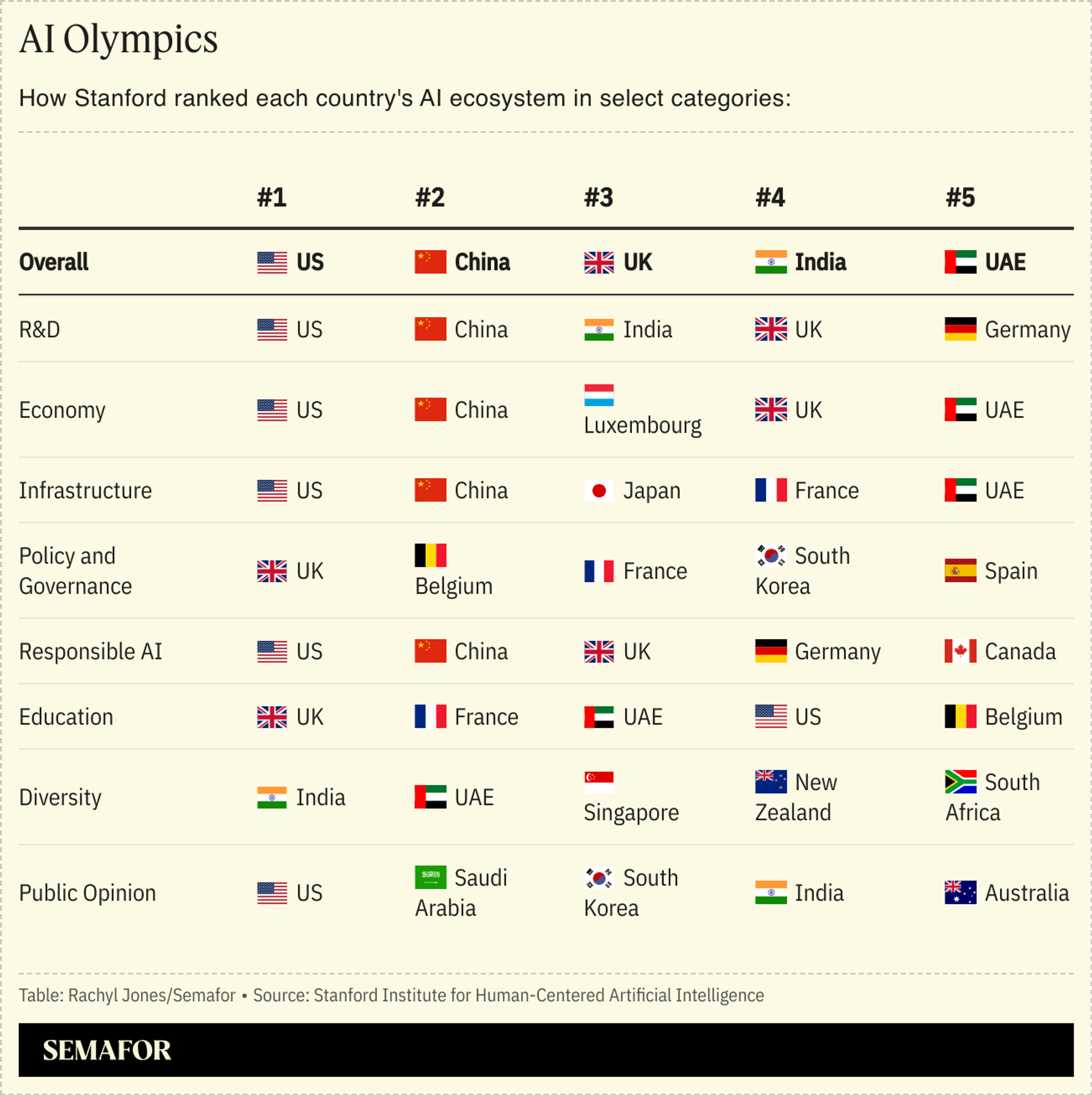The News
The US has been called the Wild West when it comes to AI safety due to a lack of federal governance compared to other countries. But that hasn’t impaired its status as the top AI ecosystem in the world, according to a Stanford University ranking.
Stanford’s Institute for Human-Centered Artificial Intelligence (HAI) has created a tool that measures the strength of AI ecosystems based on a country’s economy, infrastructure, education, and yes — governance. Those metrics led a panel of experts to designate the US as the world’s AI powerhouse by a landslide because of its high number of existing models, notable private investments, and research on responsible AI. China follows, with strengths in its number of patents granted, investment, and clear national strategy.
“Since the beginning, it’s been those two countries — one, two. That hasn’t changed,” Ray Perrault, who co-directed the project, told Semafor. “Those countries are both significantly above everyone else, and they were always significantly above everyone else.”
Stanford HAI began measuring national competencies and ranking countries in 2017. On Thursday, it released its tool where users can apply different weights to categories — like available infrastructure over constituents’ public opinion of AI, for example — to see how they impact the rankings. Stanford’s own list has weights applied to different categories, assigning research and development, as well as the economy, as most important.

In this article:
Know More
As the US and China battle for dominance in emerging technology that could have the same economic and geopolitical impacts as oil, Stanford HAI’s analysis indicates the US is better positioned as an AI growth incubator.
But both countries are pulling their regulatory strings to make headway. The US has restricted shipments of domestic chips to China and curbed investments in Chinese AI in the name of national security. The Chinese government has directed funds to domestic AI companies and worked to expand its data center infrastructure.
It’s a critical time for AI as President-elect Donald Trump is expected to relax regulations and beef up competition with China. Experts anticipate modifications to the CHIPS Act, which Trump called a “bad” deal. There is also chatter about an AI Manhattan Project, as Semafor covered Wednesday.

Step Back
While the US leads Stanford HAI’s overall list, it ranks sixth in policy and governance, behind a series of European countries and South Korea. This is partly because Europe tends to pass laws ahead of the curve, whereas the US uses class-action lawsuits as a key tool for regulation. While Europe may have more upfront rules, it also struggles to keep pace with quickly evolving technologies. Other countries can benefit from watching how the regulations play out.
“Not being at the bleeding edge of regulation is not necessarily a bad thing,” Perrault said.
Room for Disagreement
While the tool attempts to quantify the state of AI in various countries, Perrault acknowledged gaps in the data. Some countries lacked available data in specific categories, which may impact the overall rankings. China’s economic data, for example, isn’t as complete as that of the US in the model. There is also no measure for the amount of public investment in AI research around the world.
